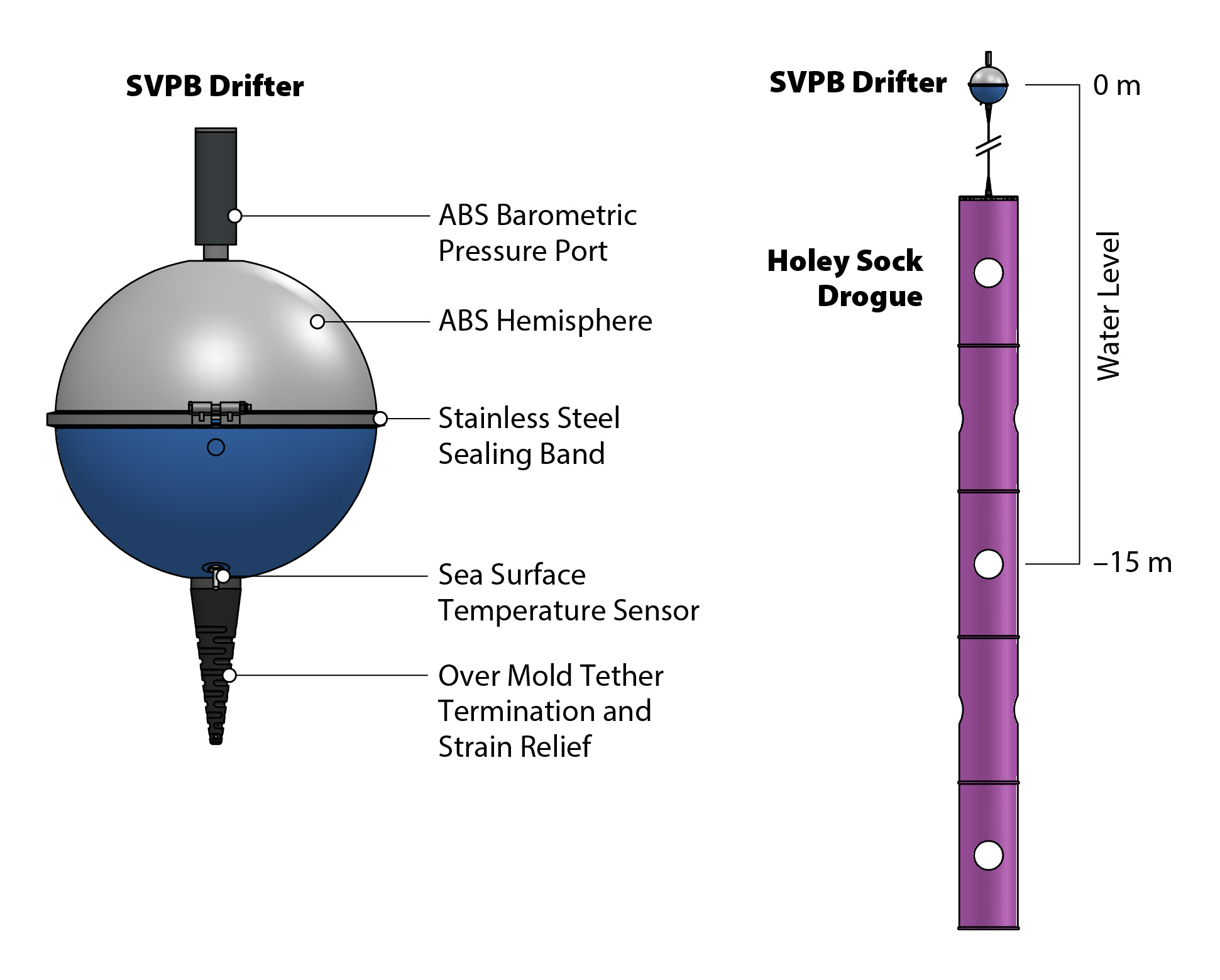
Surface Velocity Program Barometer (SVPB) Drifter
Technical Description
- 35 cm sphere surface float
- GPS-based tracking
- Iridium Short Burst Data (SBD) telemetry
- Sea surface temperature (±0.05 K accuracy)
- Sea level barometric pressure sensor (±0.4 hPa accuracy)
- Holey sock drogue centered at 15 m depth
- Variable sampling rate down to 5 minutes
- Two-year lifespan
> Download technical illustration (312 KB pdf)
Barometric Pressure Sensor
The SVP Barometer (SVPB) drifter has the same capabilities of the SVP drifter but it also carries a barometer to measure sea level pressure (Niiler, 2001; Maximenko et al., 2013; Centurioni et al., 2017; Horányi et al., 2017). The air pressure sensor can either be a high precision barometer (HPB) by Honeywell, stable over the two-year-long nominal lifespan of the drifters and with an accuracy of ±0.4 hPa, or an integrated pressure transducer (IPT), also by Honeywell, that has similar specifications and accuracy.
Data Quality
Because ocean waves often pull the surface buoy underwater, the air intake that communicates with the barometer is protected with a specially designed self-draining port and waterproofed with two Gore-Tex® membranes.
When the drifter goes underwater, erroneous sea level pressure readings will occur, and these are filtered out by an onboard algorithm before the data message is formatted and queued for satellite transmission. Like the SVP, the lifespan of the SVPB drifter is in excess of two years.
References
Centurioni, L., A. Horányi, C. Cardinali, E. Charpentier, and R. Lumpkin. 2017. A global ocean observing system for measuring sea level atmospheric pressure: Effects and impacts on numerical weather prediction. Bulletin of the American Meteorological Society 98(2):231–238, https://doi.org/10.1175/BAMS-D-15-00080.1.
Horányi, A., C. Cardinali, and L. Centurioni. 2017. The global numerical weather prediction impact of mean-sea-level pressure observations from drifting buoys. Quarterly Journal of the Royal Meteorological Society 143(703):974–985, https://doi.org/10.1002/qj.2981.
Maximenko, N., R. Lumpkin, and L. Centurioni. 2013. Ocean surface circulation. Pp. 283-304 in Ocean Circulation & Climate: A 21st Century Perspective. G. Siedler, S.M. Griffies, J. Gould, and J.A. Church, eds, International Geophysics, vol. 103, Academic Press.
Niiler, P.P. 2001. The world ocean surface circulation. Pp. 193–204 in Ocean Circulation and Climate: Obersving and Modelling the Global Ocean. G. Siedler, J. Church, and J. Gould, eds, International Geophysics, vol. 77, https://doi.org/10.1016/S0074-6142(01)80119-4.

